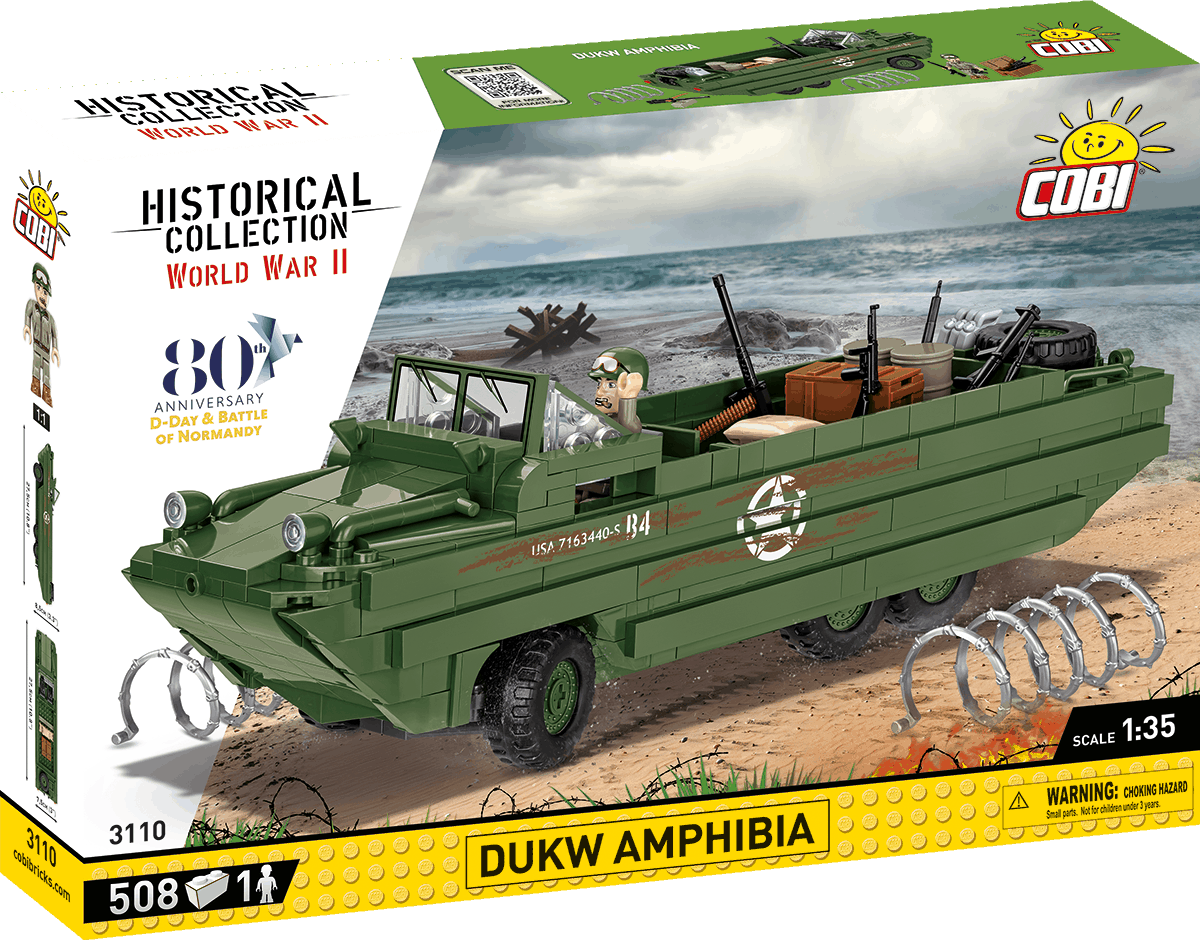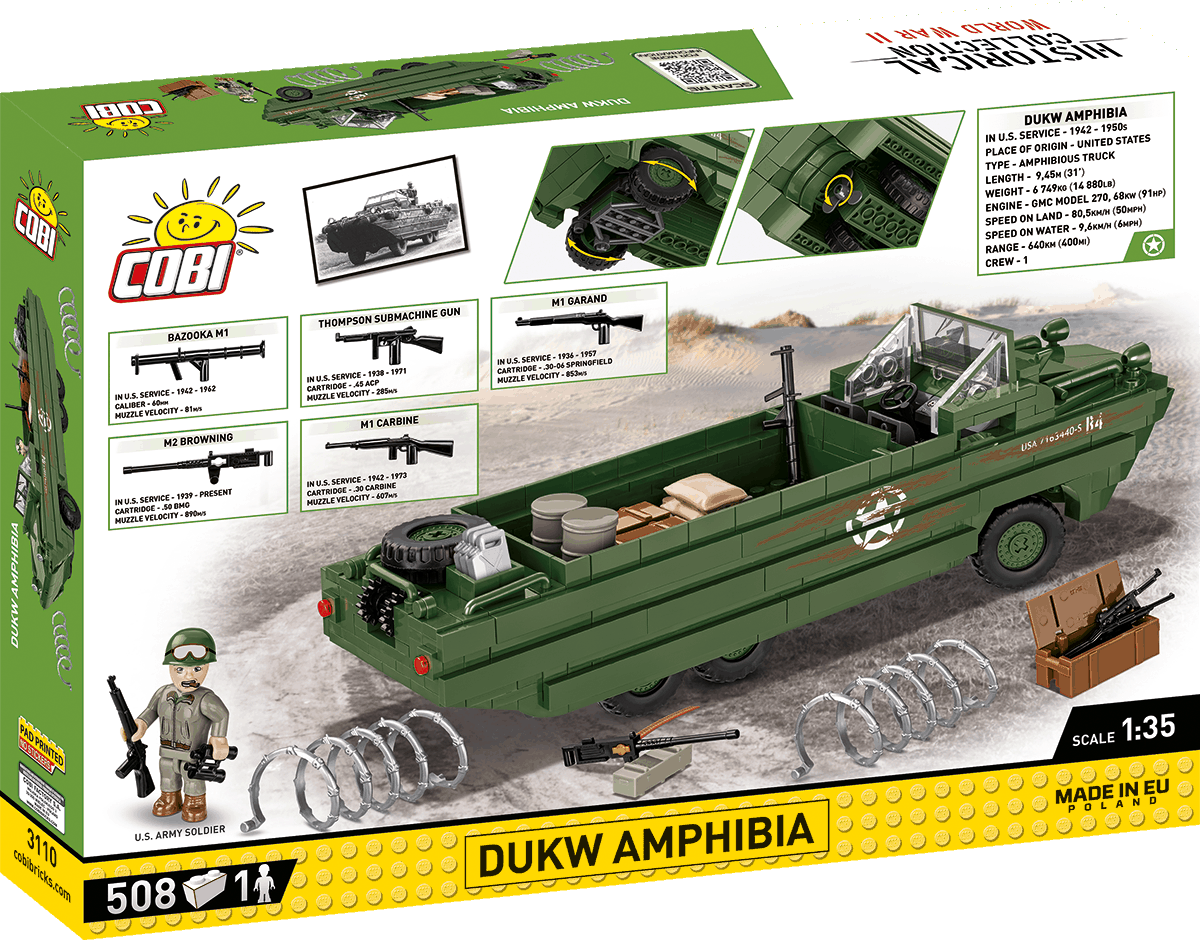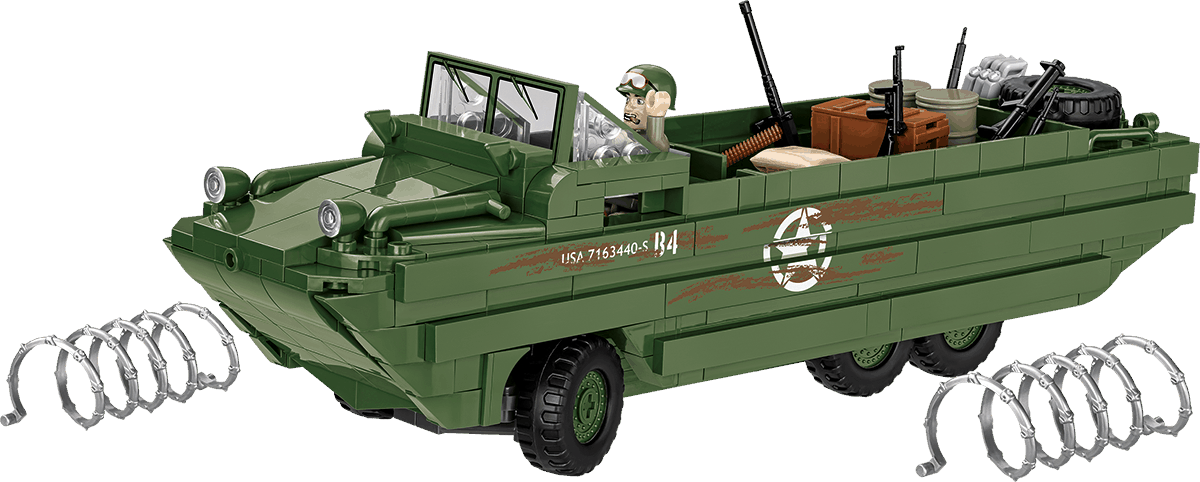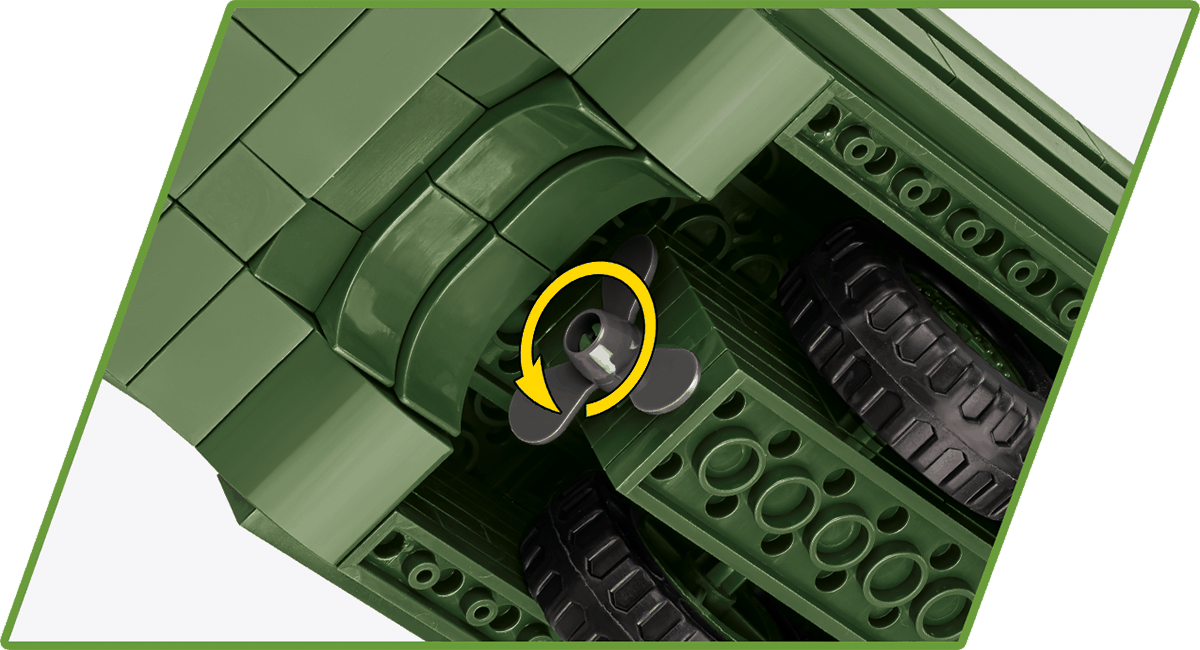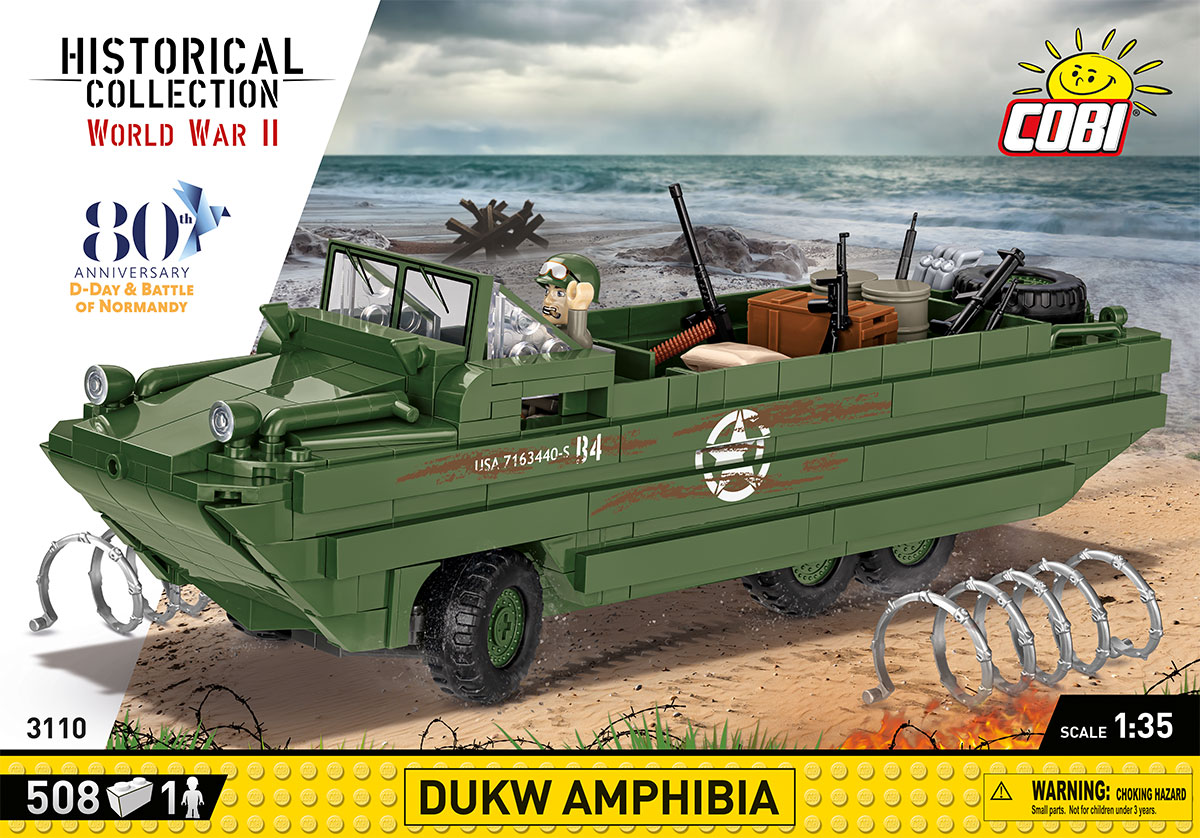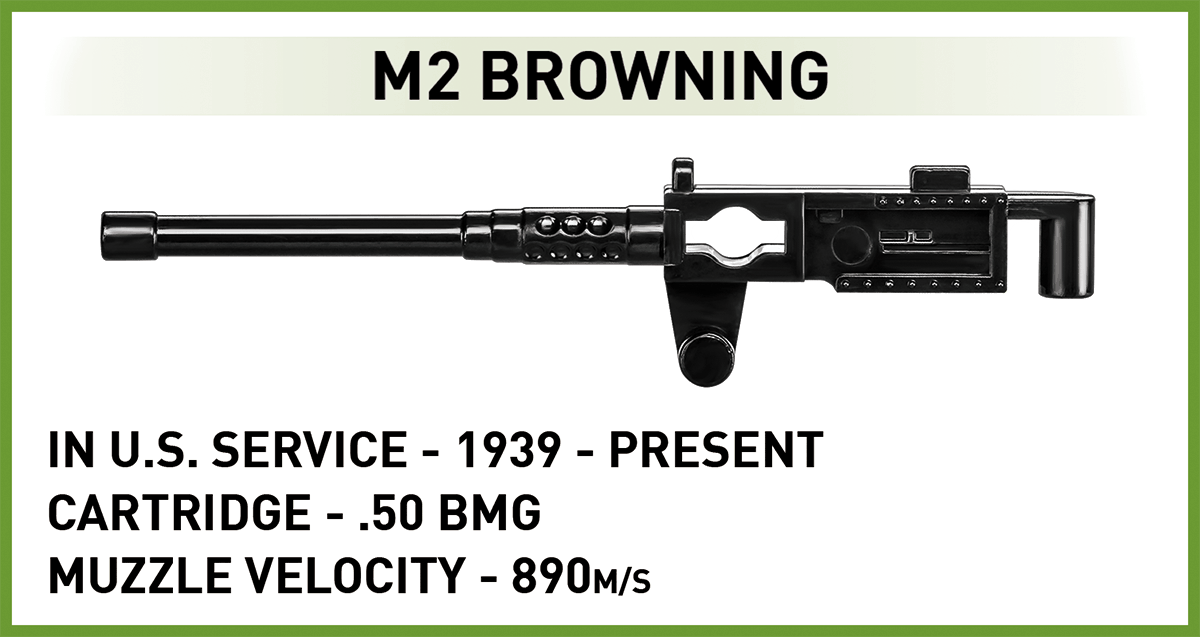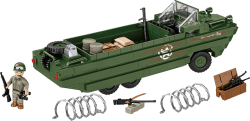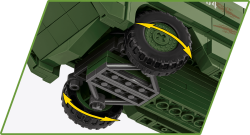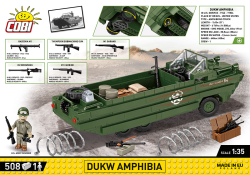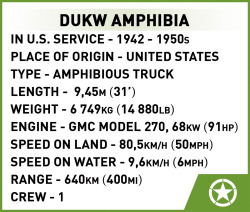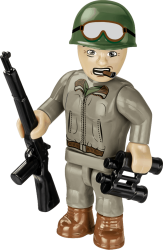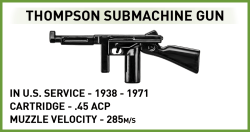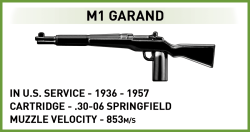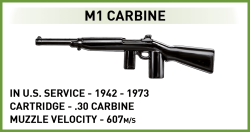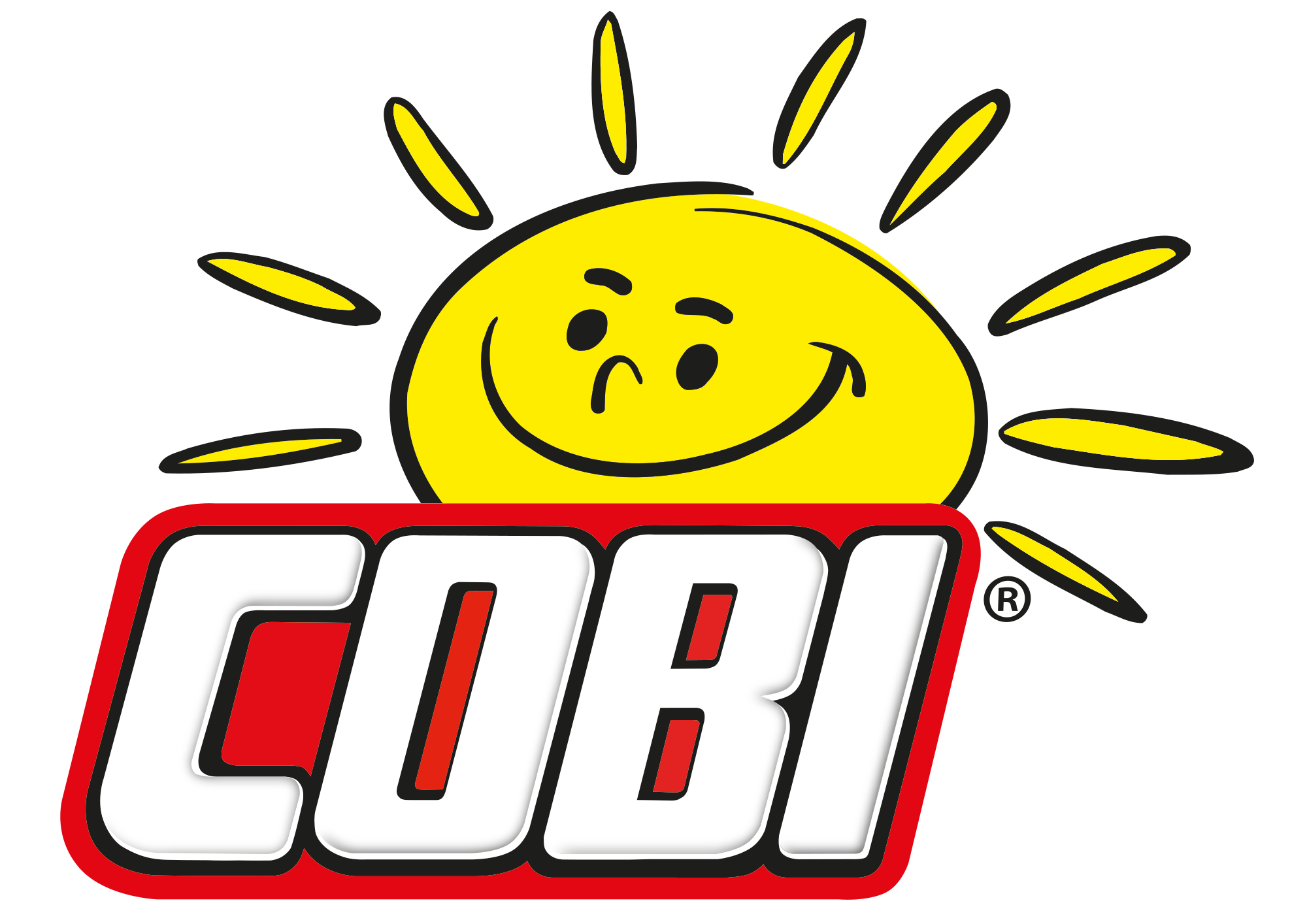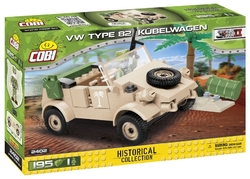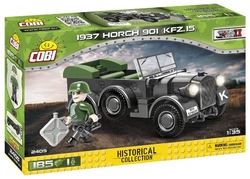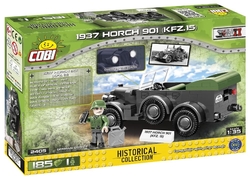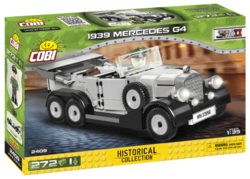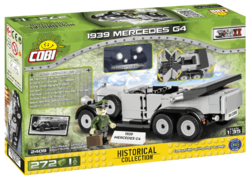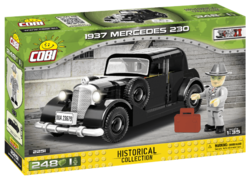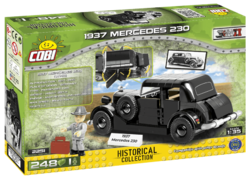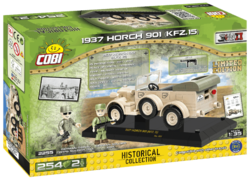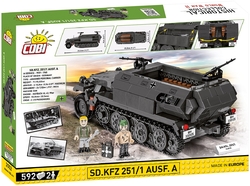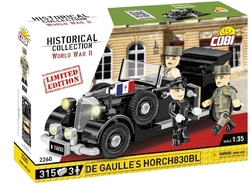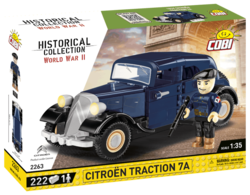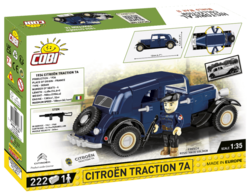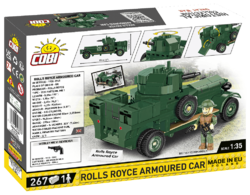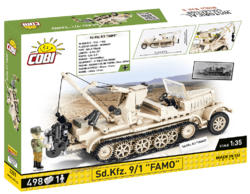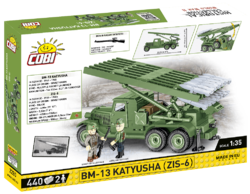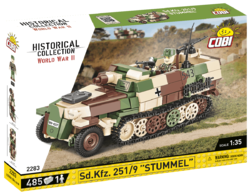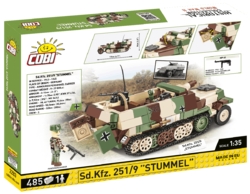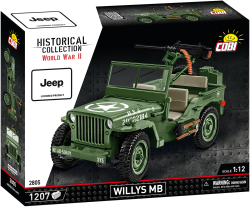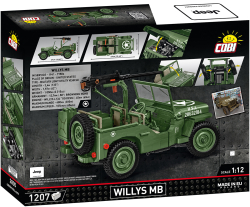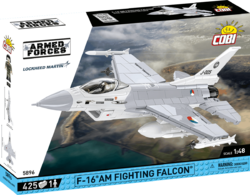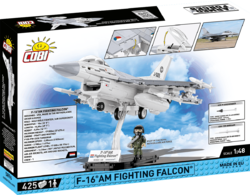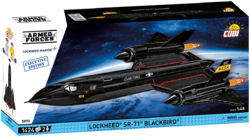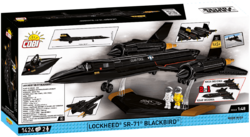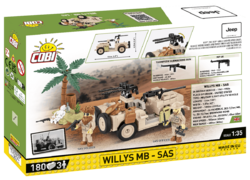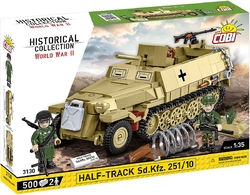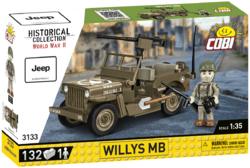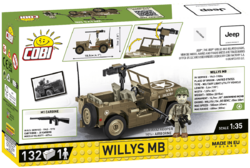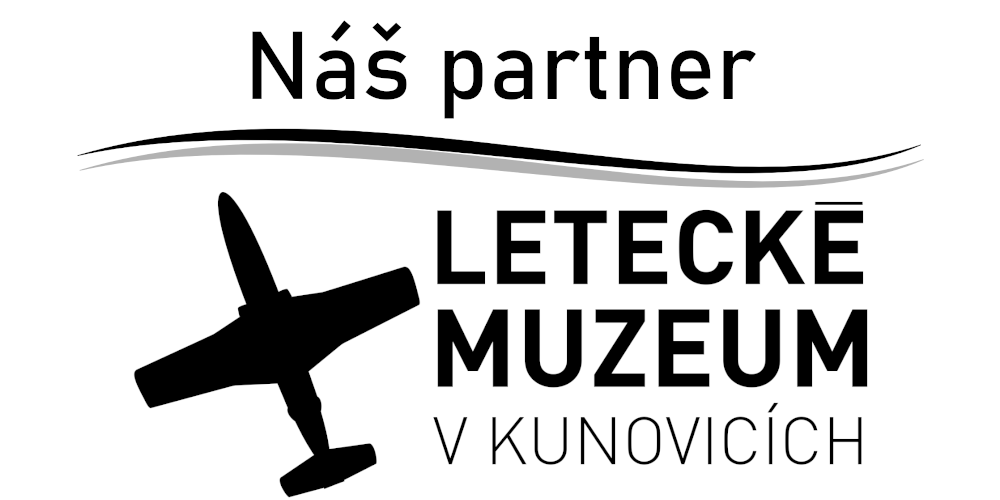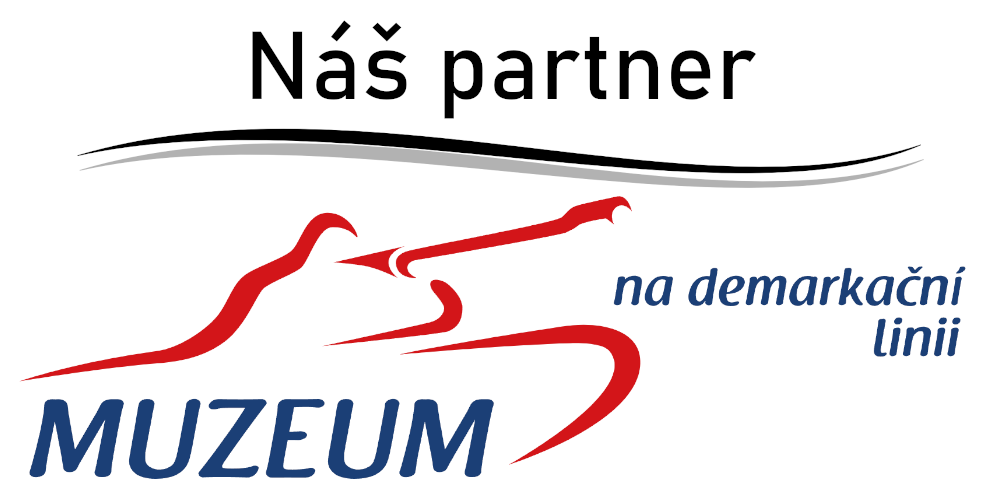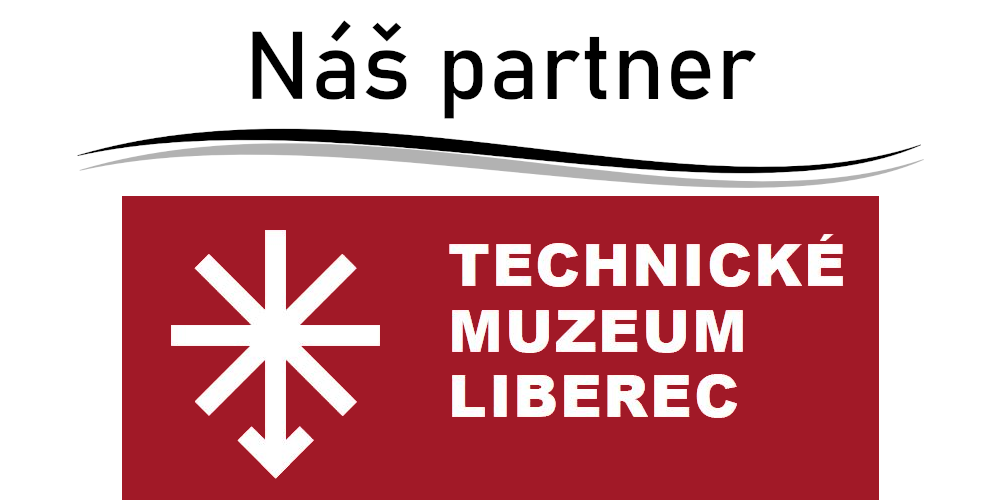A model kit of the military amphibious vehicle DUKW Amphibia GMC, which participated in the landing operations of the allies in Normandy. The assembled model has a turning propeller, front axle swivel wheels and a winch on the rear of the vehicle. The package includes fuel barrels and canisters, a spare wheel, sandbags, an ammunition box, razor wire and an American soldier figure equipped with binoculars and a set of weapons.
Show more
0 %
(0 Ranking)
899 Kč
pcs
Add to Cart
In stock - ready to ship (2 pcs)
| List Number: | COBI-3110 |
| EAN: | 5902251031107 |
| Warranty: | 24 months |
| Manufacturer: | COBI |
| Loyalty Points: | 7 |
| Price excluding VAT: | 742,90 Kč |
Description
Parametres
Files and Links
Discussion
Reviews

You know that:
- The DUKW amphibious vehicle called "Duck" by the manufacturer was created in 1942 on the chassis of the CCKW truck.
- Sparkman & Stephens, which had experience in building vessels, and automobile manufacturer General Motor participated in the development of the vehicle.
- This resulted in a 6-wheeled vehicle/vessel with all-wheel drive and a propeller.
- The US Army initially rejected the amphibious vehicle, but in the end, as is often the case, chance contributed to its success.
- When a severe storm hit Provincetown in 1942, the Coast Guard went on a rescue mission for a small fishing boat. The storm was so strong that in a few moments even the rescuers needed to be rescued.
- Employees of the nearby factory where the DUKW prototype was stored took the vehicle out to sea, and despite strong winds and rain, they brought everyone safely to land. This success convinced the US Defense Committee, and before long mass production began.
- Good stability on the water, sufficient speed and cargo capacity made the "Duck" an ideal vehicle for the Allied landings in Normandy.
- Many DUKW vehicles were sent to the Omaha Beach sector from which the iconic period photographs are known.
- About 21,147 units were produced in several factories until 1945.
More than 500 vehicles were sent to the Soviet Union as part of Allied aid. After the end of the Second World War, the Soviets copied the vehicle and continued to produce it under the designation BAV 485. - The last vehicles were retired from the armed forces only in 1982. However, they still remain in service as a popular attraction for transporting tourists to abandoned places.
Technical parameters: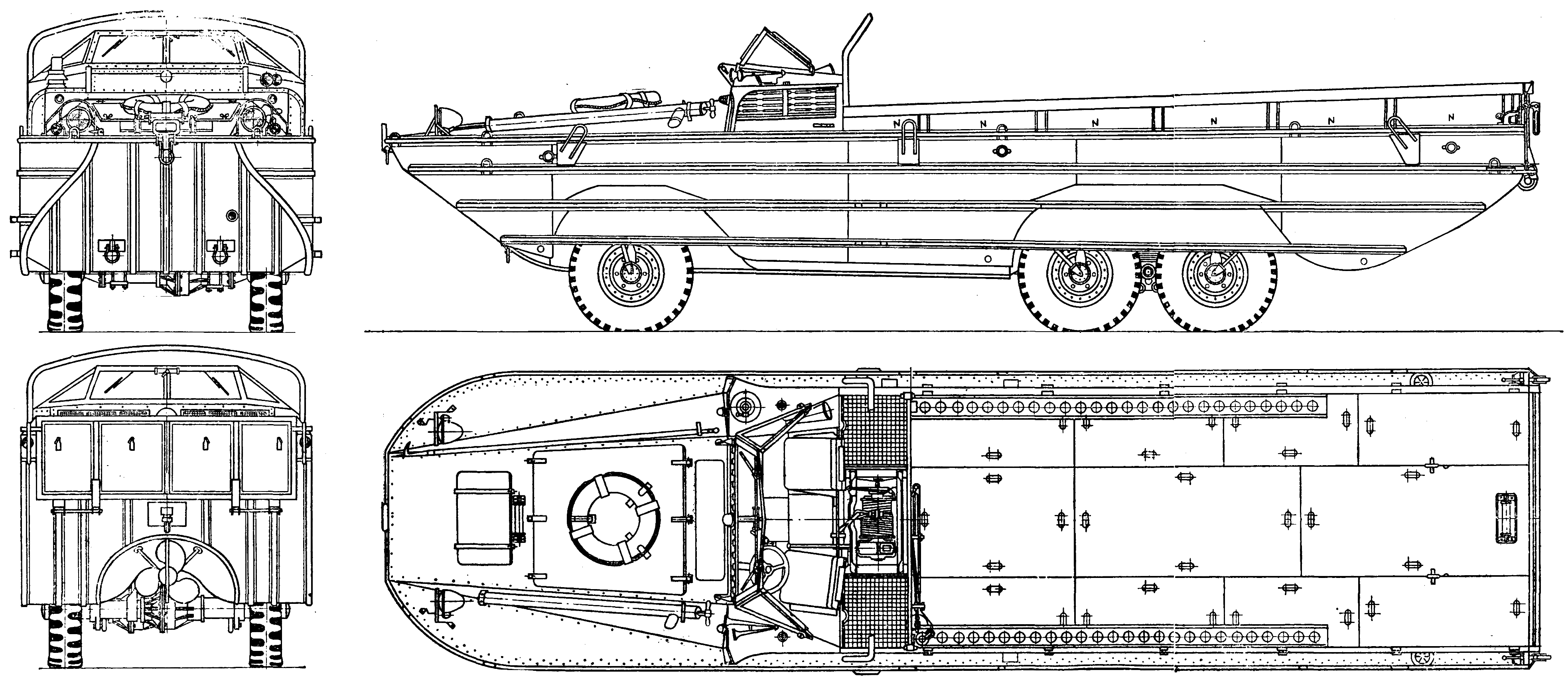
- dimensions length 9,45 m, width 2,44 m, height 2,69 m
- weight 6 749 kg (empty)
- power unit 6-cylinder GMC Model 270 68 kW petrol engine
- maximum speed on road 80 km/h, in water 10 km/h
- fuel tank capacity 212 l
- range up to 640 km on the road
- main armament M2 Browning machine gun
- crew: driver + 24 soldiers, or 2 300 kg of cargo
From the memoirs of Sergeant J. Smith, 1st Infantry Division:
"What was going on around us was hell. We were all relieved when our "Duck" twitched. It was clear that the wheels had touched the sand at Omaha Beach. The driver revved the engine to the max and drove the vehicle toward an overhang that offered us relative safety. When I looked back, I realized we were just lucky."
Assembly Instructions
| Version (series) | 05/2024 |
|---|---|
| Number of figurines | 1 pcs |
| Scale | 1 : 35 |
| Dimensions after assembly | 27,5 x 7,5 x 8,5 cm |
| Box dimensions | 40 x 28 x 6 cm |
| Number of pieces | 508 pcs |
| Package weight | 680 g |
| Recommended age | 8+ |
| Contains luminous blocks | No |
| Material | Plastic |
| Collection | World War II |
| Compatible with other brand of kits | Yes |
Discussion is empty.
There is no review for product yet









